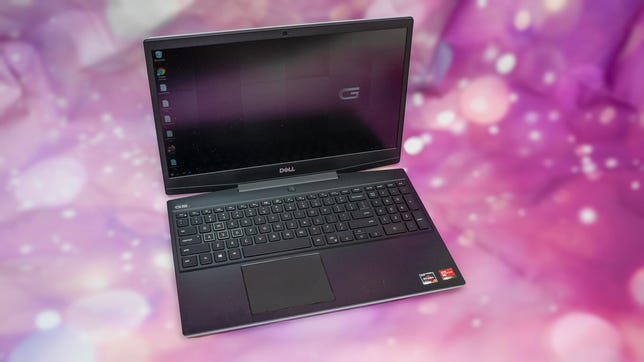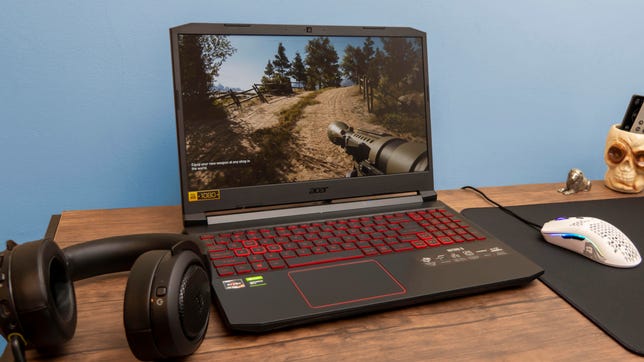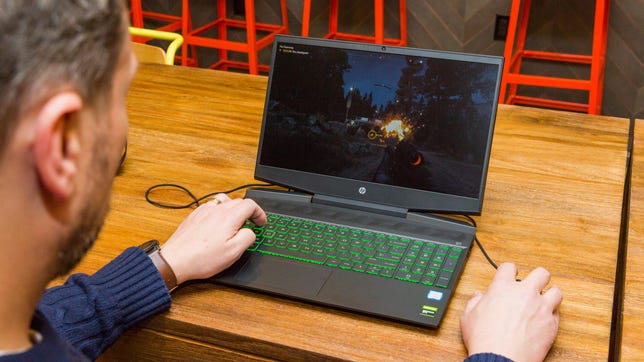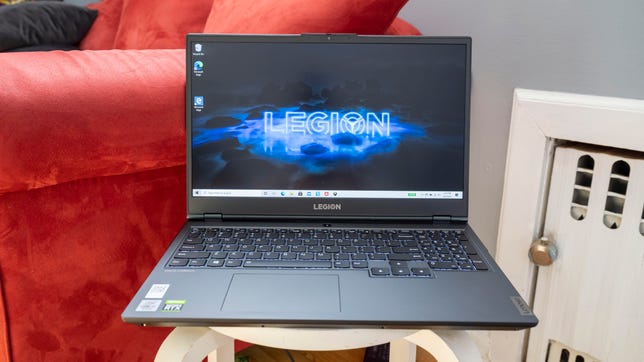The best gaming laptops under $1,000 include brand-name models known for their high quality, so your hobby doesn’t have to cost an arm and a leg. That doesn’t mean you shouldn’t be careful when shopping, though. There are plenty of cheap gaming laptops out there that you’ll want to avoid, which aren’t known for their quality and longevity. It can be tough to know which models are truly a good value. That’s why we’ve rounded up some of the best cheap gaming laptops under $1,000, with some models starting closer to $700.
That means that you’re not limited to low-res gaming on cheap gaming laptops and can get an immersive experience playing games like Fortnite, Minecraft, Apex Legends, CS:GO and PUBG. It still costs a pretty penny to get what’s considered an affordable gaming laptop, but frugal gamers can save even more money if they look for the best cheap laptop deals on a refurbished or open-box option from the likes of Amazon, Micro Center and Woot.
Read more: How to Buy a Gaming Laptop
The recommendations below are based on our reviews and testing. Our aim is to help you get your ideal gaming experience on a cheap laptop. And if you want to improve your gaming and work-from-home experience, you may want to look into some inexpensive gaming gear to help you do it. We’ll update this list of the best cheap gaming laptop options as we review new products. Also, if you need help deciphering what specs to look for on a good, cheap gaming laptop, we’ve got some advice below.
Dell
Dell streamlined its G-series gaming laptops, going from three models down to just one — and it’s all for the best. Instead of having to decode the various feature and quality differences between them, there’s just one chassis available with a variety of configurations with an 11th-gen Intel processor or AMD Ryzen 5000 H-series processor, though those models start at over $1,000. All of the processors can be paired with up to a 6GB Nvidia GeForce RTX 3060, 8GB DDR4 RAM or 16GB DDR4 RAM and 256GB SSD or 512GB SSD. They’re basically a more budget-friendly version of those from its Alienware division, but still capable of playing the latest AAA titles. Prices have been up and down lately due to supply issues, so if you’re a gamer on a budget you may have to wait to get the best deal. This gaming laptop has eight USB Ports and the laptop is available in two colors.
Sarah Tew/CNET
The Acer Nitro 5 is the best affordable gaming laptop that comes in both 17.3- and 15.6-inch sizes. A 17-inch cheap gaming laptop is a rarity with entry-level gaming laptops; most sub-$1,000 gaming laptops have 15.6-inch displays, and the Acer’s larger screen lets the gamer sink in and get lost in the chosen gaming world. Unfortunately, the larger screens are currently just above $1,000 at the moment. This cheap gaming laptop comes with an 11th Gen Intel Core processor with 8GB RAM and 256GB SSD.
Sarah Tew/CNET
It’s the bright screamin’-green backlit keyboard that really gives away that HP’s 15.6-inch Pavilion Gaming laptop isn’t just a normal midsize notebook. Sure, there are some pretty large rear fan vents, but otherwise the chassis is fairly tame and all black except for a slight green tint to the HP logo on the lid. Inside the gaming notebook is an excellent mix of components that are good for gaming as well as work.
Lenovo
The Legion 5 is an updated version of the Y540, which was one of our favorite gaming laptops for its design and best gaming laptop value. There are a few changes to this gaming machine’s design, but mostly it’s what’s inside that’s changed, including a choice between AMD (Legion 5) and Intel (Legion 5i) processors. Prices still start at just under $1,000 for the AMD models but if you can spend closer to $1,300, you’ll get more for your money. If you are a gamer who needs to keep costs down, the company’s budget gaming IdeaPad Gaming 3 laptop starts down around $750.
Frequently asked questions
Are budget gaming laptops worth it?
You can find a good cheap gaming laptop, but they certainly have performance limitations compared to more expensive laptops. The components necessary for an enjoyable PC gaming experience are expensive, which means even entry-level gaming laptops are still typically between $700 to $1,000. Also, because these models use lower-end components, the gaming performance they’ll have on today’s demanding AAA games might not hold up for future titles.
Cheap gaming laptops are worth considering if you typically play older games or games that aren’t graphically demanding or you’re OK playing at reduced graphics quality to maintain fast frame rates. They’re also a suitable option if you’re looking for a laptop for work or school, but with enough graphics power for casual gaming during your downtime.
What should I look for in a cheap gaming laptop?
For the best gaming experience with a budget gaming laptop, you want to make sure you get the most graphics power affordable from the start since this can’t be upgraded later, unlike memory or storage.
A cheap gaming laptop with an entry-level Nvidia GTX 1650 normally starts around $700, though the current chip shortage has prices up and supplies low. That chip gives you enough graphics performance to play the newest demanding games at medium settings. Spending between $800 and $1,000 (or perhaps a little more) will get you a laptop with a GTX 1650 Ti, a 1660 Ti or even a 3050 Ti for a better gaming experience.
If you’re on a strict budget when shopping for a cheap gaming laptop, again, go with an Nvidia GTX 1650 graphics chip. If you can afford to spend closer to $1,000, you’ll be better off in the long run as you’ll be able to play more demanding games now and later.
What other components should I look for in a cheap gaming laptop?
With the CPU, memory and storage, your choices are a little more flexible for a budget gaming laptop, especially the latter two. Because many games such as first-person shooters rely more on the graphics chip than the CPU, you don’t necessarily need the fastest available. Going with a more midrange CPU like an Intel Core i5 or AMD Ryzen 5 is a safe bet.
Also, gaming laptops, especially cheaper ones, let you easily expand or upgrade your memory and storage. If you’re going to skimp, this is the best place to do it with the expectation you’ll upgrade eventually and put your cash into the GPU and CPU instead.
Beyond the graphics chip, look for:
- A 10th-, 11th- or 12th-gen Intel Core i5 or i7, or AMD Ryzen 4000 or 5000 series processor.
- At least 8GB of memory (aka RAM) and the capability to add more post-purchase.
- At least a 512GB solid-state drive or a combo of 256GB SSD storage and a larger hard drive.
Do budget gaming laptops have good displays?
Most of your money is going toward components, so the other parts — the display, keyboard and trackpad and build quality — are going to be OK, but not fantastic. This is why I lean toward models like the Dell G15, which has its power input and other ports on the rear for a cleaner setup when connected to external peripherals. It also has a decent battery life, which is something that typically falls by the wayside on cheap gaming laptops.
That said, display quality has improved on entry-level gaming laptops in the past couple of years, particularly when it comes to refresh rates. It’s now common to find 120Hz or 144Hz displays offered, which will make fast movement in your games look smoother and give you a more responsive experience. It’s not worth paying extra for, though, unless the GPU is capable of faster frame rates for your games, too.
How we test computers
The review process for laptops, desktops, tablets and other computer-like devices consists of two parts: performance testing under controlled conditions in the CNET Labs and extensive hands-on use by our expert reviewers. This includes evaluating a device’s aesthetics, ergonomics and features. A final review verdict is a combination of both those objective and subjective judgments.
The list of benchmarking software we use changes over time as the devices we test evolve. The most important core tests we’re currently running on every compatible computer include: Primate Labs Geekbench 5, Cinebench R23, PCMark 10 and 3DMark Fire Strike Ultra.
A more detailed description of each benchmark and how we use it can be found in our How We Test Computers page.




